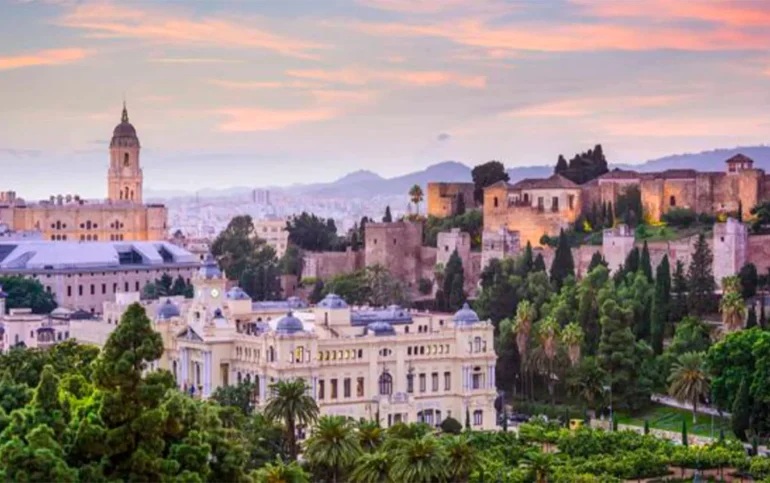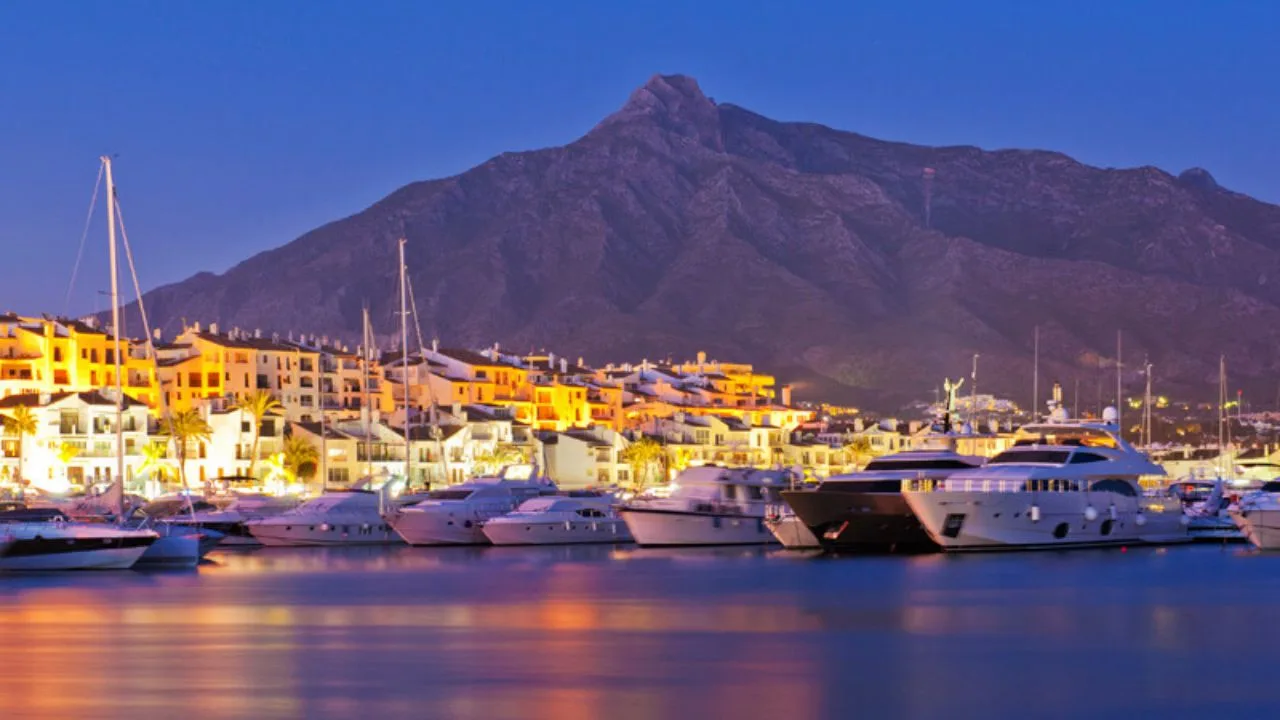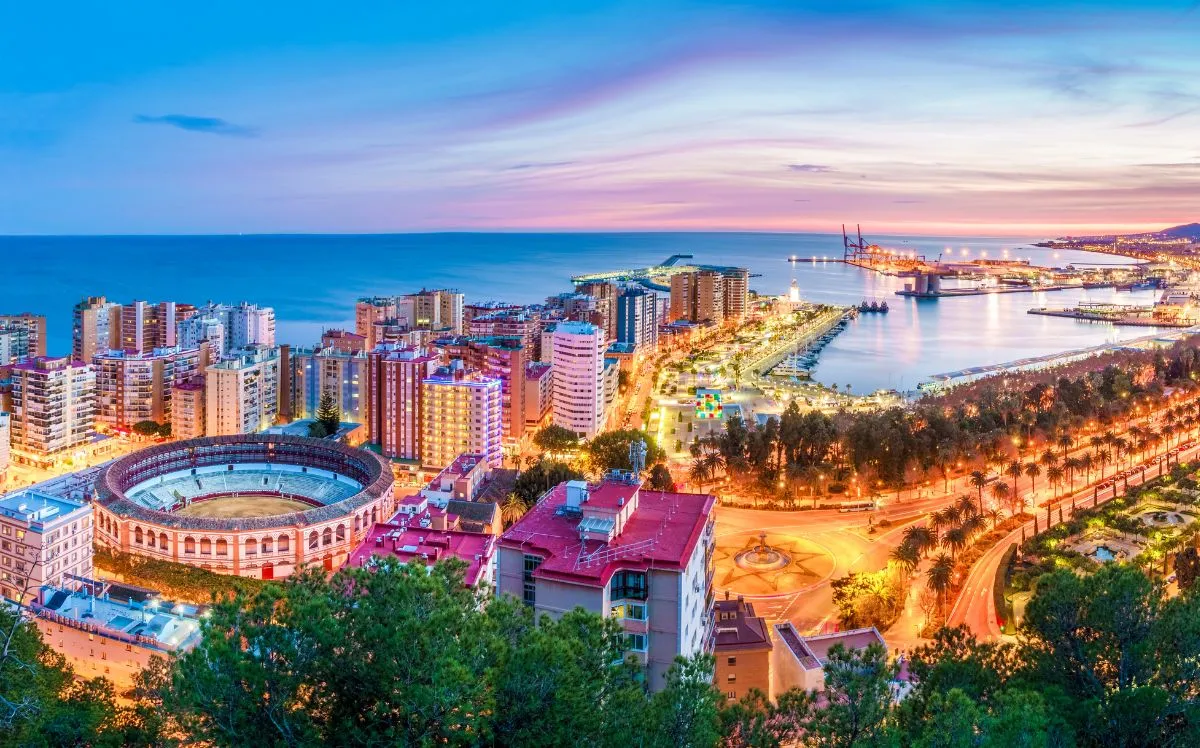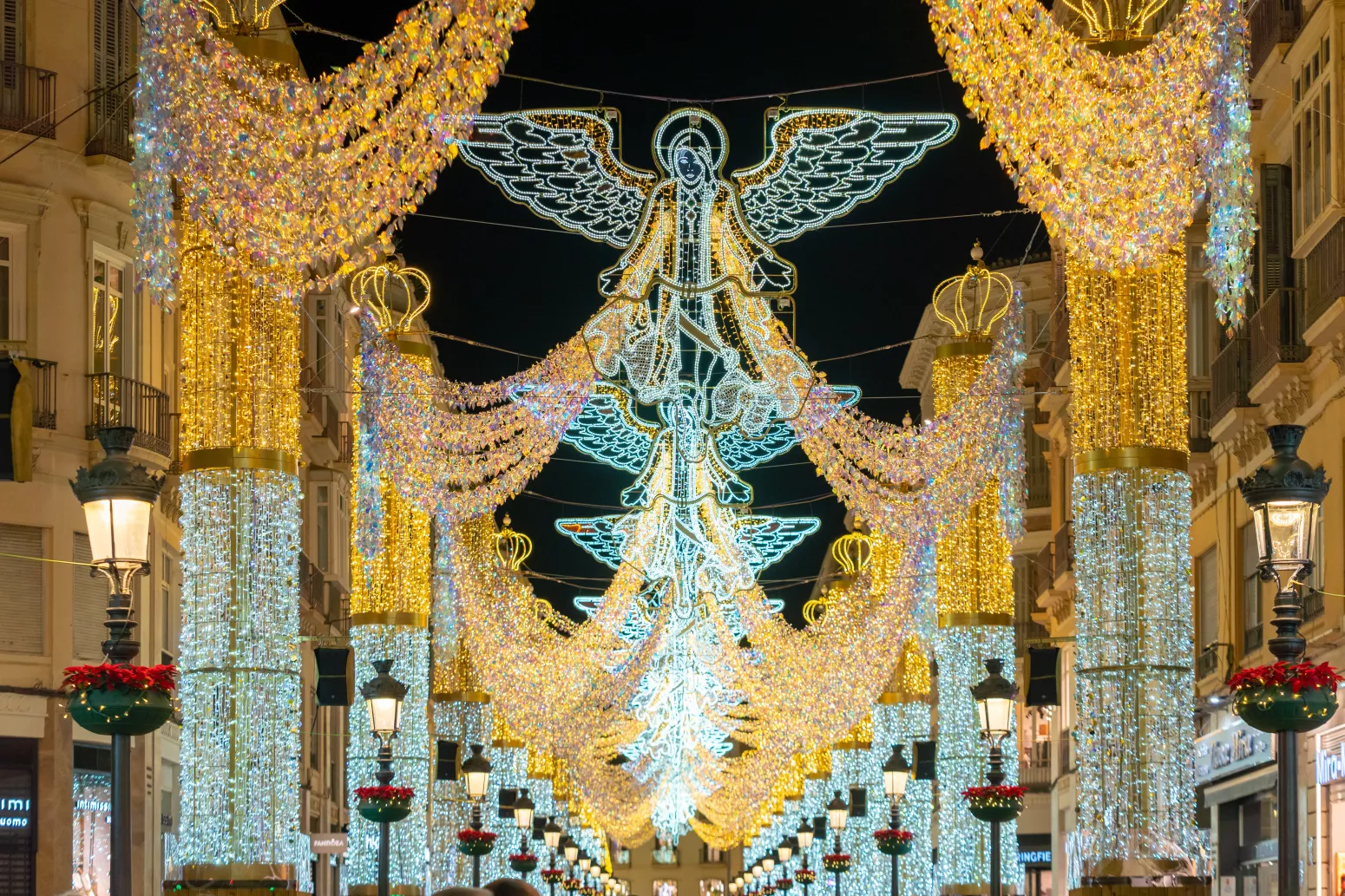Guide to Malaga
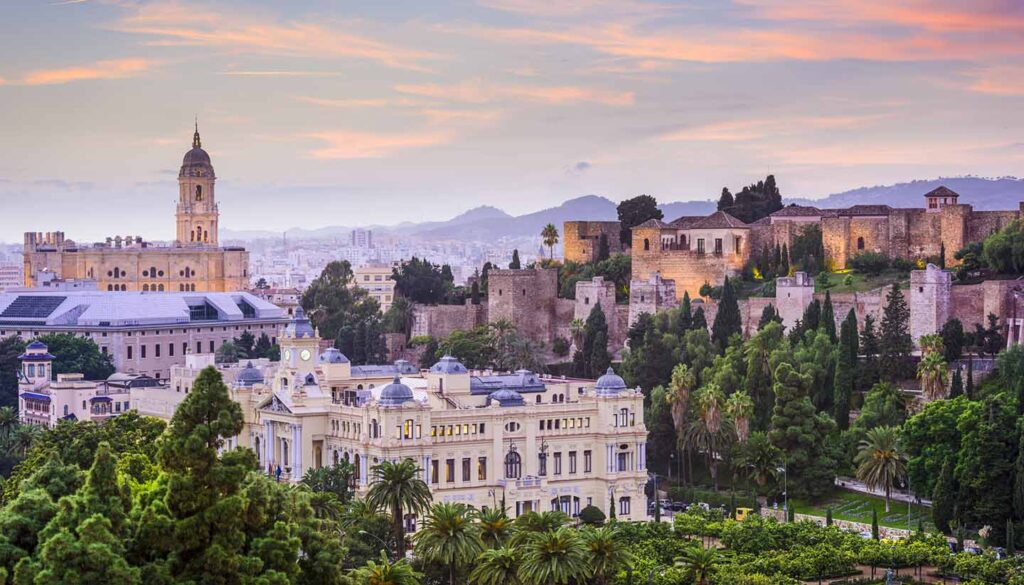
Facts:
- Malaga is a port city in Andalusia, Southern Spain.
- The city has around 1,661,785 habitants and is the 6th largest city in Spain following Madrid, Barcelona, Valencia, Sevilla and Zaragoza.
- The river Guadalmedina runs through the city and divides it into two, where the old city centre is located on the left bank of the river.
- The dominant occupations in the city are wine trade, olive oil production, sugar manufacturing and the soap and textile industry. The city’s port exports- in particular – almonds, cork, sulphur and salt.
- The city owns one of Spain’s largest airports, a trading port and a university. Due to its climate, the city is one of Spain’s most important tourist destinations.
- The city has a pleasant Mediterranean climate with warm summer- and mild winter months. The average annual temperature is 18 ° C. The warmest months are July and August with an average of 24 ° C and 25 ° C and the coldest January and February with 11 ° C and 12.8 ° C on average.
- The city’s most prominent inhabitant was the painter Pablo Picasso (b. 1881), and the Picasso Museum in Málaga, which opened in 2003, is one of the largest tourist attractions in Spain.
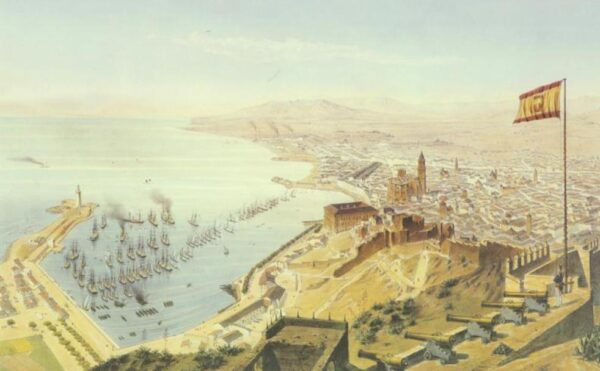
The history of the city:
The Phoenicians first colonised the city of Malaga in 1000 B.C. and named it Malaka. Slowly, Malaga became an important commercial centre, as it was rich in metals like silver and copper. The Greeks also came in and settled into an area called Mainake (6th century). The Greek rule ended around 550 B.C. when the Carthaginians attacked and took control of Malaga. This forced the Phoenicians also to abandon their settlements as the Carthaginians took control of the commercial industry.
The Romans attacked Malaga and other parts of Spain around 218 B.C., which drove out the Carthaginians. Under the Romans, Malaga witnessed a cultural and economic revolution as the Roman theatre and the port of Malaga was constructed.
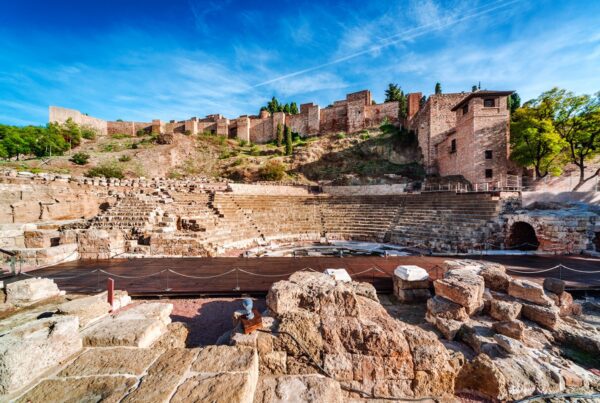
After the Roman Empire fell at the beginning of the 5th century, the Visigoths tribes attacked Malaga.
The Visigoths could not dominate Malaga for a long time and finally had to leave when the Moors attacked in 711. The Moors ruled Malaga for a long time and called Spain Al-Andalus. They left behind interesting historical structures, festivals and cultural activities.
Malaga became a significant Moorish city, famous for its figs and wine. It was one of the last Moorish cities to fall to the Christian conquerors when they attacked it in August 1487, with the help of small Christian clans within the town.
Malaga was transformed into a Christian town with the construction of churches and other structures, while the Moorish structures were destroyed. The only exceptions were the forts of Alcazaba and Gibralfaro. The conquerors of Christianity were Isabella and Ferdinand.

The 17th and 18th centuries were the worst periods for Malaga, with epidemics, floods, and earthquakes ruining the city. The situation improved during the 19th century and the town walls built by the Moors were demolished for the expansion of the town. Malaga became a rich city and an important tourist centre.
Malaga as of today:
Economic crisis continued even during the start of the 20th century, and the agricultural sector suffered the most due to natural disasters. Political instability dominated this era due to the Spanish Civil War. But during General Franco’s rule, Malaga started regaining its position as an important commercial centre.
It was not till the 1960’s that Malaga became famous as an important tourist centre with hotels and resorts sprouting all over the city. The Costa del Sol was one of the most important regions responsible for boosting the city’s economy. Malaga has undergone significant transport infrastructure since the 1900s to improve its roads and motorway connections to other neighbouring cities. Today Malaga is an important commercial centre and boasts of being Spain’s second-largest port and its third-largest international airport. It is also an important business centre with a number of international conventions held throughout the year.
Attractions we recommend:
Alcazaba:
The Alcazaba is a Moorish fortress, for the Moorish kings of Granada. The fort dates back to the 7th century, although much of the structure dates from the mid-11th century. The entrance through the gate is known as Puerta del Christo (Door of Christ), where the first mass was celebrated after the victory of Christianity over the city. The fort was part of the Arab Malacca defence system and linked to the city’s ramparts, which have now disappeared. Originally, a double wall was the connection between the Alcazaba and the Castillo de Gibralfaro above.
It’s possible to get access and walk up the Alcazaba for only 3,50 € and it is definitely worth a visit. The views are just as amazing as the ruins. It’s also possible to walk all the way up to Castillo de Gibralfaro for 5,50 €. It is a cheap and amazing experience.
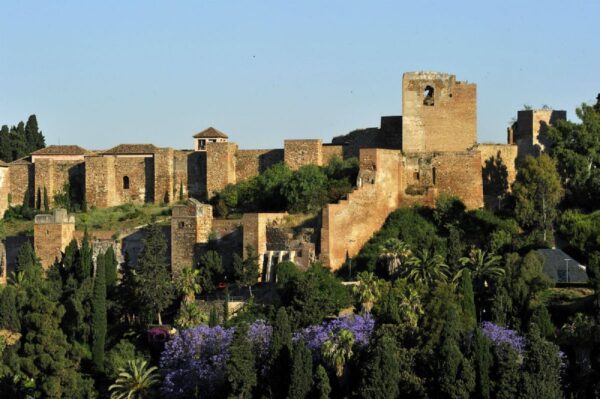
Castillo de Gibralfaro:
The magnificent Castillo de Gibralfaro sits on a high hill overlooking Malaga city and port, and dates back to the 10th century. The castle was built in 929 AD by Abd-al-Rahman III, Caliph of Cordoba, on a former Phoenician enclosure and lighthouse, from which its name was derived – gebel-faro (Arabic and Greek, meaning rock of the lighthouse). The most visible remains of this historic monument are the solid ramparts which rise majestically from dense woods of pine and eucalyptus; inside the fortress itself you will find some buildings and courtyards, reminiscent of those in the Alhambra.
Same as with the Alcazaba you can visit the Castillo de Gibralfaro for only 3,50 € or do both castles for 5,50 €.
If you only want to visit the Gibralfaro we recommend jumpin on one of the red tour buses, which not only takes you right to the top of the castle, but also stops by other great attractions on the way.
The Cathedral:
The Cathedral in Malaga is a Roman Catholic cathedral built in the Renaissance style. It lies in an area formerly bounded by a now missing part of the mediaeval Moorish city wall; remains of the city wall surrounding the nearby Alcazaba and the Gibralfaro fortress. The cathedral was built in the period from 1528 to 1782 according to plans drawn up by Diego de Siloe. The interior of the church is also done in Renaissance style.
It is possible to visit the Cathedral and learn about it through an audio guide. The general tickets are 8 €, but there are lots of discounts for seniors, students, groups etc. It’s also possible to add a visit to the roof from where you have amazing views of the city and the port. The cathedral visit + roof tour is 12€. If you only want to visit the roof it is 8€.
The Picasso Museum:
Pablo Picasso was born in Malaga and therefore it’s not so odd that there’s a museum built for him and his artwork. The museum opened in 2003 and has 285 works donated by members of Picasso’s family. The collection ranges from early academic studies to cubism to his late re-workings of Old Masters. Many additional pieces are on long-term loan to the museum.
The museum is open from Monday to Sunday with the hours varying depending on the season. In the summer it’s open from 10am to 8pm whereas in the winter it’s open from 10am to 6pm.
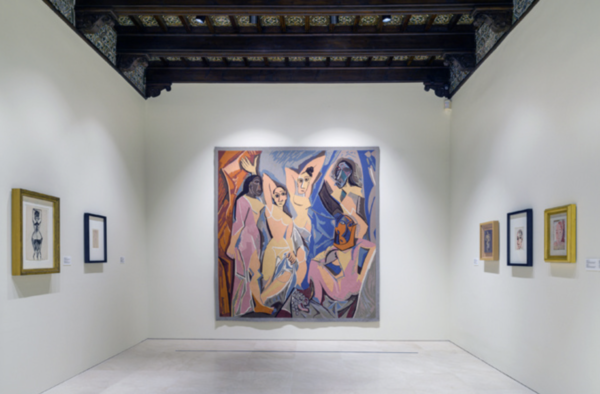
Jardín Botánico-Histórico La Concepción:
The Finca de la Concepción (Concepción country estate) is one of most beautiful and important tropical and subtropical gardens of Spain and one of the most appreciated ones in the whole of Europe. Created around 1855 by the Marquises of Casa Loring, it was expanded some years later by the second owners, the Echevarría–Echevarrieta family. There are more than 25,000 plants belonging to about 2,000 different species of which 90 are palm trees, 200 are native plants and the remainder are tropical and subtropical.
The Roman Theatre:
The Roman Theatre in Málaga is located on the west slope of the Alcazaba hill. Built during the reign of Augustus, it was used until the 3rd century. It was used as a cemetery in the 5th and 6th centuries and subsequently became a source of stone for restructuring the Alcazaba, where you can still find capitals and shafts of Roman columns. After remaining hidden for centuries, the theatre was discovered in 1951. It has three parts: the cavea or stands, the orchestra pit or semicircular area between the stands and the stage.
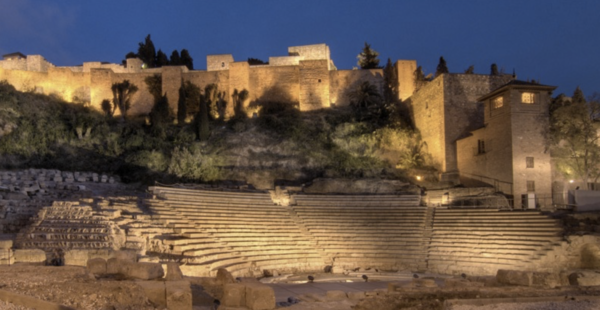
The port:
The port of Málaga is an international seaport, and a popular fishing port. It is the oldest one of this kind operating in Spain. The port is in a natural bay, well protected by the shape of coastline. It is the second most important port in Spain for cruise passengers; and is currently undergoing huge renovations. The port has 10 quays that are currently in use, for cruise ships, ferries, cargo ships and recreational boats. The main use is for bulk liquid imports, and cruises; approximately 700,000 passengers pass through Málaga port each year, on 220 different cruise liners.
A part of the port you can experience is Muelle Uno which opened in 2011 and has turned into a symbolic spot for the city. This commercial area in the Port of Málaga is a few metres from the city centre facing the sea that provides a wide range of shops and restaurants.
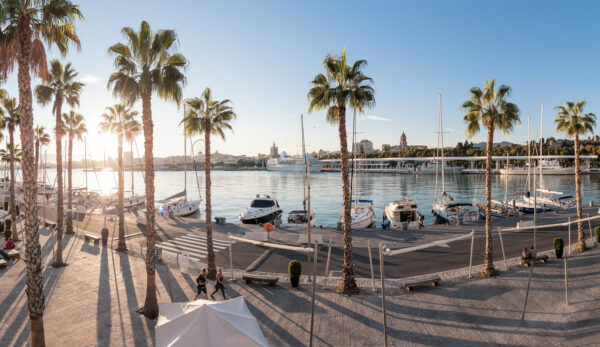
Restaurants we recommend:
El Pimpi:
At El Pimpi we can enjoy exquisite local gastronomy and the wines of the denomination of origin Malaga, the extra virgin olive oil first pressing, the tomato “huevo de toro”, the chestnut ham or the sweet wine of muscatel grape.
Along with its charming location and good food, what makes El Pimpi unique is that since its beginnings it has been a meeting point for celebrities.
On the walls next to the bar, we can find a huge number of photos of people who have enjoyed an evening here, such as Sean Connery, John Malkovich, Tony Blair, the Duchess of Alba, the Picasso family, the Queen of Bhutan, the singer Alaska or the band Maná among others.
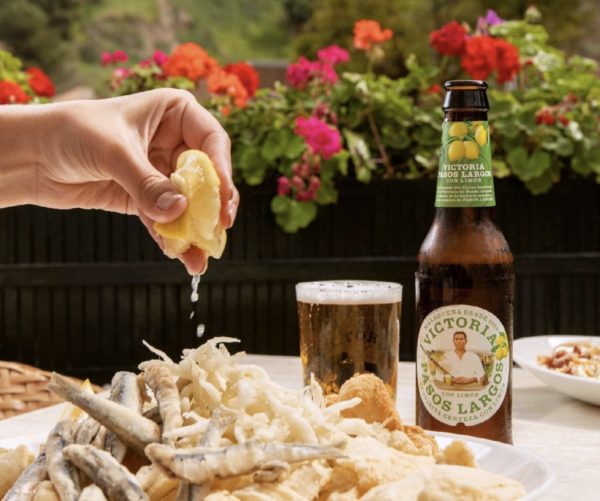
Byoko:
Byoko is a hipster’s breakfast dream. But a tasty dream indeed! There is no shortage of different types of organic avocado toasts or their various yoghurt bowls stuffed full with chia seeds, pumpkin seeds, goji berries and every other kind of super food and fruit you can imagine. Don’t miss out on the smoothies either. All of their dishes are colourful, beautiful and super tasty. It’s an instagram breakfast come to life.

Doña Inés:
Doña Inés offers traditional Spanish cuisine in a modern setting in the Soho neighbourhood of Malaga. The atmosphere is shaped by its simple but elegant interior décor. This together with the food and some good company will for sure make for a memorable evening. Some of the star dishes are the avocado with scallops, the suckling lamb shoulder and the lobster risotto. Doña Inés offers not only great food but also has the service to match. The staff is friendly, helpful and super professional.
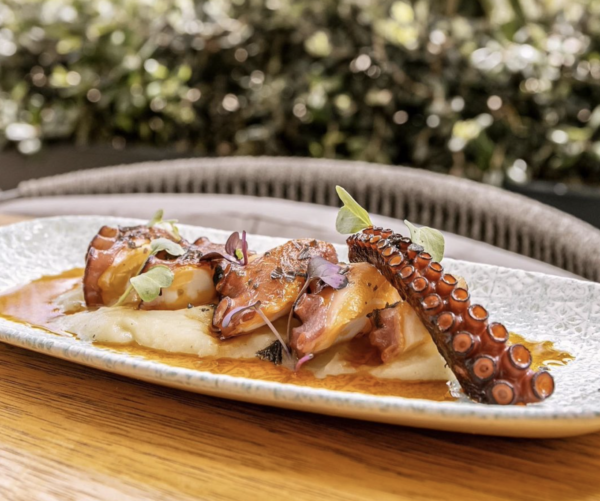
La Barra de Zapata:
La Barra de Zapata is not a traditional tapas bar. Instead, it offers creative Spanish tapas with a unique twist. The menu is short but each dish is elaborate. And all the dishes have a great presentation, they are like pieces of art. One of the local favourites is the black bao bun (made with squid ink) with pulled pork and eggplant chips.
La Barra de Zapata is also perfectly located in the heart of Malaga’s old town. The bar is tucked away in a tight pedestrian street and the outdoor terrace has lovely views of the cathedral tower.
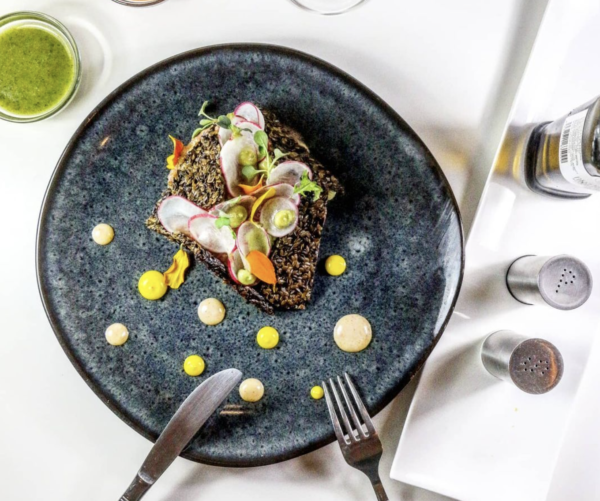
Property prices:
Malaga province has been a popular location for foreigners to buy property for decades. Interest is high among Northern Europeans keen to buy in Malaga. In Q1 2022 (latest available), the average price per m² in Malaga was €2,185. This is down 0.2% in the year, according to the Registrars Association latest quarterly review. Figures are based on prices registered in title deeds.
Tinsa (Spain’s largest valuation company whose data is also based on valuations) reports that prices went up by 6% in the year to Q1 2022 in Malaga city, compared to a national rate of 6.6% and a provincial rate of 7.6%. Prices stood on average at 21% below their peak in Q2 2008.
Off-plan and new properties tend to come with higher price tags than resale homes, a trend clearly visible in the city. According to the latest report from the OMAU (March 2022), prices for new builds rose by 7.2% to reach an average of €3,453 per m². The most expensive new properties were in the east of Malaga (€5,032 per m²), although those in the west, particularly around Malaga Towers weren’t far behind (€4,707 per m²) and a rise of almost 17% in the year.
The latest statistics for Malaga province (Q1 2022) from the Registrars Association are as follows:
- Sales totalled 10,884 in the quarter, up by 56.4% in the year The figure is well ahead of the same period in 2019, indicating that the property market has exceeded pre-pandemic levels.
- Resale property sales rose by 62.4% in the year.
- Purchases of new-build properties in Malaga rose by 39.8% in the year. The 2,603 new-build sales were the third-highest figure in Spain.
- Foreigners accounted for 33.7% of all purchases (third highest in Spain) with a majority of British buyers.
- Malaga had the third-highest number of new-build sales per 1,000 inhabitants in Spain.
- The province had the fourth-highest sales after Madrid, Barcelona and Valencia.
The length of time a property spends on the market is a good indication of market temperature. A report from Idealista in early March found that in February, almost 20% of properties on the market in Malaga sold in less than one week. Nearly a third changed hands in under 3 months. The Costa del Sol property market experienced a similar trend.
 English
English Danish
Danish 